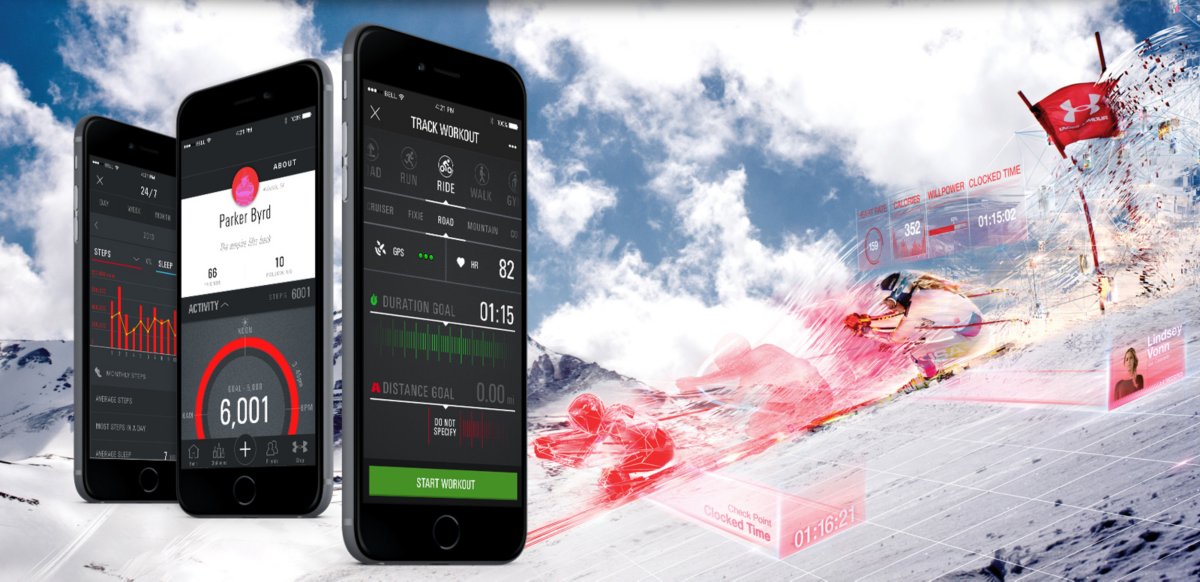Under Armour isn’t going to stop caring that you have shoes and shirts emblazoned with its logo. But with tech, the Tide Point-based company is taking a different approach.
“We want to be able to provide our athletes, our users, with an incredible experience no matter what device they choose to plug in,” Under Armour Senior Manager of Strategy and Operations for Connected Fitness Sara Hester said Tuesday at a wearables-focused panel organized by the Maryland/Israel Development Center.
Where wearables are valuable is what that data means, and how do I change my life because of it.
If that means they plug in a Fitbit or a Jawbone UP, so be it. Hester acknowledged it’s a different view than a device maker would take. But Under Armour believes the bigger value is in the many types of workout, biometric and performance data that the devices put out, rather than a physical piece of hardware.
“Where wearables are valuable is what that data means, and how do I change my life because of it,” Hester told the packed house at the office of Sage Growth Partners in Canton’s Broom Factory.
That view goes a long way toward explaining what Under Armour has been up to lately.
The innovation that led to better football T-shirts is just as big a part of the company’s image as the vision of CEO Kevin Plank toiling away in his grandparents’ basement. The company entered the wearables space with Armour39 in 2013. But over past couple of years, moves have indicated a power hitter’s pivot toward software.
There’s been a big acquisition announced with an earnings report, an app debuted in Vegas, a partnership with a smartphone maker announced in Spain.
All told, Under Armour has spent $710 million on tech acquisitions over the last two years. According to Hester, it’s all aimed at building a health and fitness network that connects users to each other, and groups of users to fitness experts that can further help them along.
With the big money Under Armour is able to spend, the network has grown fast. After two years, the company now boasts a network of more than 130 million users. As Hester told it, each move had a place in the big-picture strategy, known around headquarters as Connected Fitness.
The 2013 acquisition of MapMyFitness gave the company an immediate baseline of 32 million users, and a place for users to share workout routines. According to Hester, adding the MapMyFitness team also bolstered Under Armour’s dev capabilities.
With MapMyFitness founder Robin Thurston installed as UA’s CEO of Digital, the company set out to create its own app, and made the Austin office its tech hub.
After a handful of big-ticket acquisitions, the company's fitness network now boasts more than 130 million users.
Launched at CES in January, UA Record is seen as the central social network of Under Armour’s digital universe. It’s also an open platform, allowing any device or app to plug in and aggregate data.
An example of that approach was on display in March, when the company showed off the results of a partnership that integrated UA Record with HTC’s new fitness band, the Grip. In this case, the hardware was another company’s job.
With the architecture in place, the network had room to grow further. A big influx of 83 million users came from the February acquisition of MyFitnessPal. The nutrition-focused app’s main feature is a calorie counter, which adds new types of data to the network, Hester said.
Denmark-based Endomondo, also acquired in February, brought an international dimension to the user base. Eighty percent of its users are from outside the U.S., with most being European, Hester said.
In interviews, Plank has made it clear that the company isn’t going to stop trying to sell as much apparel as possible. But in the near future, it also now sees technology as being able to connect that apparel through wearables. Plank and company undoubtedly have an eye on a time when bulky arm bands will be replaced by sensors that are embedded within clothes.
Along with providing a single place for lots of different types of data to live, providing an open platform has the added benefit of bringing in more users, and in turn connecting them to the Under Armour brand. If that data is telling a runner that their shoes are getting worn out, then that could lead to a sale.
For Under Armour, the future is all about “collecting data, showing that data and understanding what that data means,” Hester said.
The company will have plenty of data for internal use as a result, so it may even help make the shirts and shoes better.
Join the conversation!
Find news, events, jobs and people who share your interests on Technical.ly's open community Slack

Baltimore daily roundup: Medtech made in Baltimore; Sen. Sanders visits Morgan State; Humane Ai review debate

Baltimore daily roundup: The city's new esports lab; a conference in Wilmington; GBC reports $4B of economic activity

Baltimore daily roundup: Find your next coworking space; sea turtle legislation; Dali raided and sued


